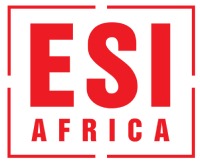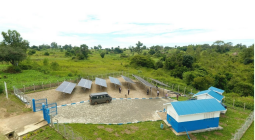Solid waste, clean water: Powering a circular future
Outdated infrastructure, prohibitive costs, and hazardous contaminants are intensifying the scale and complexity of water pollution and undermining progress towards universal clean water access.
African water and wastewater systems face a convergence of pressures that threaten both public health and environmental integrity. Population growth and urban expansion are increasing demand for potable water while introducing a broader spectrum of contaminants, including pharmaceuticals, pesticides, and industrial by-products.
Much of the existing infrastructure is ageing and unable to cope with these pollutants, and conventional treatment methods often fail to remove them effectively. Many of these pollutants are persistent, nonbiodegradable, and bio-accumulative, posing long-term risks to both human health and ecosystems.
These challenges contribute to a troubling reality in which a high proportion of illnesses in developing countries are waterborne. Traditional treatment techniques such as lagoons, sedimentation, and coagulation–flocculation are resource-intensive, generate large volumes of sludge, and often result in by-products that are disposed of unsafely, thereby creating new environmental hazards.
Against this backdrop, the reuse and valorisation of locally available waste materials for water and wastewater treatment present a compelling opportunity. This approach offers the dual benefit ofimproving water quality while mitigating solid waste burdens, creating a closed-loop system aligned with circular economy principles.
Turning waste into water treatment solutions
Innovative approaches are transforming how waste materials are reused and valorised in water andwastewater treatment. For example, Advanced Oxidation Processes (AOPs) use chemical reactions to degrade pollutants, including techniques such as ozonation for breaking down organics and disinfecting water, UV light for inactivating microorganisms, and photocatalytic degradation for light-driven pollutant breakdown.
Membrane technologies are also an option that offers precision filtration, from reverse osmosis (forcing water through a semi-permeable membrane to remove dissolved salts and impurities), and nanofiltration (operates similarly but allows some smaller molecules to pass through), to ultrafiltration (targets larger molecules, bacteria, and viruses). Further to this is membrane bioreactors, which effectively remove dissolved salts, bacteria, viruses, and organic matter.
Biosorbents are another option to adsorb pollutants from water, as these materials are often derived from agricultural or industrial waste. Activated carbon is a versatile and highly porous technique, while processed materials such as coir pith, rice husk, and bagasse provide low-cost alternatives. Industrial by-products can also be repurposed into effective biosorbents.
Advantages and limitations of adsorbents
The advantages of using waste-based adsorbents for water treatment in Africa are substantial. They draw upon abundant raw materials from agricultural, industrial, and household sources, reducing waste volumes and conserving natural resources. They can achieve high contaminant removal rates even in dilute solutions and, in some cases, can be regenerated for repeated use.
However, these benefits are balanced by notable challenges. The disposal of used adsorbents can create secondary pollution risks, particularly if incineration or landfilling leads to the release of captured contaminants.
Many adsorbents also require specific operational conditions, such as controlled pH and temperature, which may not be readily achievable in all treatment settings. Over time, adsorption beds may lose efficiency through fouling or saturation, and in complex wastewater streams, competition between different pollutants for adsorption sites can reduce overall performance.
Life cycle assessment: A missing link
Ensuring that waste-based water treatment solutions are truly sustainable requires rigorous evaluation through a Life Cycle Assessment (LCA). LCA provides a systematic framework for assessing environmental impacts from raw material extraction through production, use, and end-of-life management.
By revealing trade-offs such as the energy demands of adsorbent activation or the environmental costs of transporting feedstocks, LCA supports more informed decision-making. While many studies clearly define their goals and scope, they often fail to carry out the Life Cycle Inventory phase in sufficient detail.
Without comprehensive data on material and energy inputs, it isn’t easy to quantify impacts such as greenhouse gas emissions, eutrophication, or ecotoxicity.
This lack of detail also makes it harder to replicate results or to compare different technologies on a like-forlike basis. Integrating LCA into all stages of project design and evaluation would help align African wastewater treatment initiatives with the United Nations Sustainable Development Goal 6.3, which calls for improving water quality, wastewater treatment, and safe reuse.
Adsorption a new pathway to consider
Adsorption has emerged as a preferred method for waste-based water treatment because it is adaptable, cost-effective, and capable of achieving high removal efficiencies without generating toxic by-products. It is a physicochemical process in which pollutants adhere to the surface of a solid material, and it can be highly effective for both organic and inorganic contaminants.
The process involves either physisorption, in which weak intermolecular forces bind the pollutant to the adsorbent, or chemisorption, in which stronger chemical bonds are formed. Waste-derived adsorbents often possess a high carbon or oxygen content, thermal stability, and narrow pore diameters, which together enhance their ability to capture and retain pollutants.
In some cases, the waste material can be dried and powdered for direct reuse, while in others it is transformed through pyrolysis into biochar and then activated chemically or physically to improve porosity and surface chemistry. Advances in nanotechnology are also making it possible to produce composite materials with properties tailored to specific contaminants.
Pathways to scalable solutions
Moving from laboratory promise to large-scale adoption will require coordinated action on several fronts. Pilot and demonstration projects are essential to test materials under realistic operating conditions, which often involve variable pollutant loads and challenging environmental parameters. Cost analysis must accompany these trials to ensure that production and regeneration processes are economically viable.
Those taking this route must develop safe and sustainable methods for handling spent adsorbents to prevent secondary contamination. The integration of hybrid treatment systems, combining adsorption with complementary processes such as biodegradation or advanced oxidation, may offer improved removal efficiency for complex pollutant mixtures. Testing protocols should reflect pollutant concentrations found in real-world conditions rather than relying solely on artificially elevated laboratory levels.
Close collaboration between researchers and government agencies will be needed to embed these technologies within national water management strategies, supported by best practice guidelines that address both technical and operational considerations.
The valorisation of locally sourced waste materials for water treatment offers a practical pathway towards resource efficiency, environmental protection, and economic resilience.
In Africa, it presents an opportunity not only to address improving water quality but also to create new industries around waste processing, foster skills development, and reduce dependence on imported treatment chemicals. ESI
Cover photo: sergeyback©123rf.com




